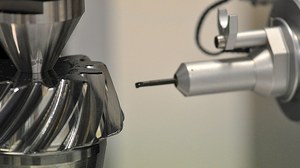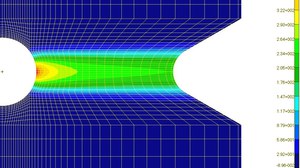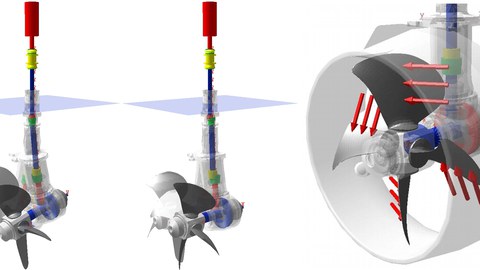Research
Since the foundation of the Chair of Machine Elements, there has been intensive research in many areas of engineering sciences. Starting in the early years, there have not only been detailed studies on individual machine elements but also on complex machines, which today would be classified as systems. For instance, the first working steam locomotive in Germany, “Saxonia”, was designed and built by Johann Andreas Schubert, the first professor of mechanical engineering in Dresden.
 © Torsten Pross Jeibmann Photografik
© Torsten Pross Jeibmann Photografik
Research
... Since the foundation of the Chair of Machine Elements, there has been intensive research in many areas of engineering sciences. Starting in the early years, there have not only been detailed studies on individual machine elements but also on complex machines, which today would be classified as systems. For instance, the first working steam locomotive in Germany, “Saxonia”, was designed and built by Johann Andreas Schubert, the first professor of mechanical engineering in Dresden. On April 7, 1839 the locomotive was put into operation by Schubert himself on the railway line connecting Leipzig and Dresden. And as if that was not enough, Schubert also occupied himself with the calculation of railway bridges. For the construction of the Göltzschtalbrücke near Mylau/Vogtland he developed a new "Theory of the construction of stone arch bridges". With a length of 574 meters, a height of 78 meters and 81 arches in four levels, the building was the world's highest railway bridge at the time of its opening. Down to the present day, the viaduct is still the highest brickwork bridge in the world and carries a railway line for ICE trains after 150 years of operation.
The progress of industrialization in Germany and especially in Saxony also brought a growing specialization of research. In the first half of the 20th century, Karl Kutzbach occupied himself intensively with the geometry, load capacity and standardization of gearwheels and planetary gears. His successor Enno Heidebroek did research on tribology (i.e. friction, lubrication, wear, slide bearings), but also he dealt with problems from the extensive field of conveyor technology.
In the second half of the 20th century, the research activities of the chair were greatly influenced by the creation of a large gear laboratory and continuing intensive research on gearwheels and gear drives by Fronius and Linke. Significant research results, especially in the fields of load capacity calculations of external and internal spur gears as well as the optimal design of bevel gear stages, were achieved during that period.
Since then, the constantly increasing complexity of modern machines, systems and vehicles on land, at sea and in the air has made it clear that the exclusive, in-depth analysis of individual machine elements is no longer sufficient. The future belongs to the engineer who can rely on a comprehensive knowledge of fundamentals and who think in complex relationships in order to access and to understand the entire system behaviour of a machine, installation or vehicle.
To meet these requirements, our research associates are occupied with research and development of classical machine elements as well as the analysis and synthesis of the dynamic behaviour of complex drive trains of machines, systems and vehicles, resulting in the following main fields of research and development activities at the Chair of Machine Elements :
• Gear boxes, especially spur, bevel and planetary gear stages including components and tribological problems
• Dynamic analysis of drive trains in machines, vehicles and systems (multi-body simulation, operational load measurement)
• Load capacity of machine elements, especially gears, axes, shafts, bearings and couplings (finite element analysis as well as servo-hydraulic component tests)
• Developing of standards, guidelines and calculation software
On the following pages, selected research priorities are described briefly. Further information can be found in the list of publication. Particularly interesting publications can be read online and downloaded as a PDF file. Further publications can be found in the conference proceedings of the "DMK - Dresdner Maschinenelemente Kolloquium", which takes place every two years in December since 2003.









